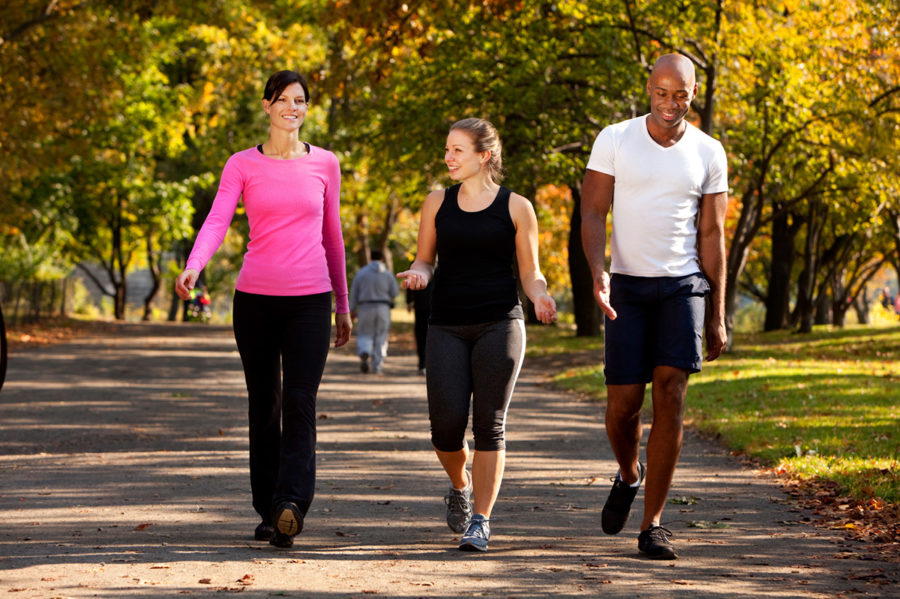Congratulations to our Meltdown contestants on making it through the first week of the challenge! Here are your Week 1 team rankings, listed by each team’s average percent of body weight loss per individual:

AVERAGE TEAM WEIGHT LOSS: 1.33%
- Wii Not Fit: 2.72%
- Oversize Highway: 2.66%
- Air Bellies: 1.85%
- Cardio Barbies: 1.76%
- Lift It to Lose It: 1.59%
- Locked & Bloated: 1.50%
- Tons of Fun: 1.15%
- Sassy By Summer: 0.97%
- Time Out Toners: 0.957%
- Team Less is More: 0.956%
- Slim-O-Knockers: 0.78%
- Wasting Away Again: 0.40%
- Make It Happen: 0.0%

MELT DOWN, BUT DON’T BURN OUT
Are you new to exercise, or has it been a while since you put on those exercise clothes? Do those clothes even fit any more?
Here are a few exercise tips to get you started on your weight loss journey:
- Start out slowly with any exercise practice. Going too fast and trying to do too much too soon can lead to injuries and giving up.
- Create small, doable goals. It’s recommended that adults work up to 150 minutes of moderate exercise a week. Read that again: work up to 150 minutes. It’s not all at once. It may sound good to exercise five days a week for 30 minutes each time, but is that reasonable or doable for you? Try three days a week for 15 to 20 minutes each. As your comfort grows, you can increase the length of time, the number of days or the intensity. You can even break up the exercise session throughout the day – 10 minutes in the morning, 10 minutes at lunchtime and 10 minutes in the afternoon. It all adds up.
- Add reminders to your daily routine to help “push” you toward exercise. Leave your exercise clothes out so you have to see them when you get home after work. Maybe choose to go straight to the gym after work before heading home.
- Choose exercise that you really enjoy. It sounds simple, but sometimes we choose to do what others tell us we “should” do or “need” to do. Choose fun, enjoyable activities and you’ll have a greater chance of staying the course and accomplishing your goals.
- Reward yourself. We know you’re thinking of French fries, but not for this. Beyond using exercise for better sleep, improved health and weight loss, which are long term benefits, try for immediate perks such as a great cup of coffee or a manicure.
- Finally, think about your inspiration for exercising. Is it your family, friends, co-workers, overall health, weight loss (to fit into your pre-pandemic clothes?) or the Marathon Meltdown? Be clear about your intentions and go for it.

SIMPLE STEPS TO HELP YOU EAT BETTER
A sliced apple versus a slice of apple pie. If it were a healthy choice contest, fresh fruit would certainly win. But many of us may find it hard to resist that sweet treat. To help you eat better, try the following simple steps:
In your home
Remember the old adage “out of sight, out of mind.” It may well work for food. You may be less likely to eat something if you don’t see it, and vice versa. So make healthy foods convenient to consume. Here’s how:
- Keep foods such as fruits and vegetables in easy reach. Place perishable produce on a center refrigerator shelf, where it can be easily seen and picked up. You can apply the same idea to foods you store in cabinets.
- Dress it up. Place healthy foods in an attractive bowl. They will be more tempting to eat.
- Cut it up. Sliced apples or baby carrots are easy to grab and snack on.
- Store food only in the kitchen. One study found people who stored more food throughout their homes, such as in an extra refrigerator, were more likely to be overweight or obese.
Before going shopping
When you go grocery shopping, it’s the best time to bring healthy food into your home. Perhaps your most handy tool: a shopping list. Research shows that people who use one tend to eat better and weigh less. Try these grocery shopping tips:
- Map out your meals for the week. Deciding what you want to eat in advance can help you create a more concise list.
- Use what you already have at home. Check your refrigerator, freezer and cabinets for ingredients to save money and time.
- Try some new healthy recipes. Schedule easier meals for busy days. Reserve ones that take longer for days when you’ll have more time to cook.
- Eat a healthy snack before shopping. It may help you stick to the list. Plus, it may prompt you to buy a greater amount of healthier fare. Consider this finding: In one study, people who snacked on an apple instead of a cookie before shopping bought more fruits and vegetables overall.
Eating out
It can be a challenge to eat healthy when dining out. Restaurants may not always list calorie counts and other nutritional information on their menus. Try these strategies:
- Scan the menu for healthier items. Generally, low-fat or low-calorie foods are grilled or steamed instead of fried.
- Watch your portion size. To cut back on how much you eat, share an entrée with a friend. Or eat half and take home the rest for later.
- Eat slowly. Your body will have more time to digest the food. You will feel full sooner and eat less overall.
- Stay away from super-sized drinks. The sugar in soft drinks can add hundreds of unneeded calories to your meal. Water with lemon is a great way to stay hydrated without a bunch of added sugar.























